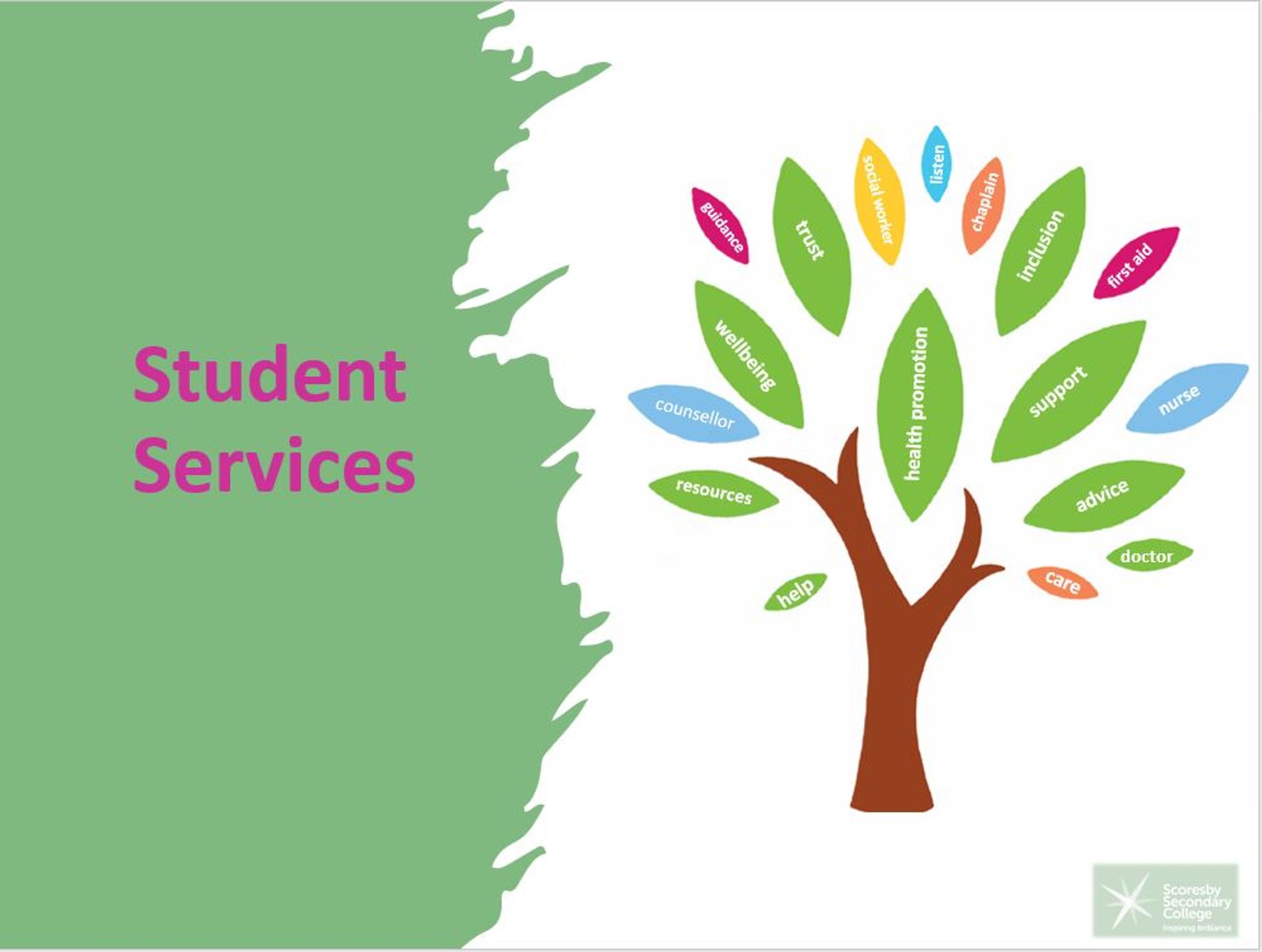Student Services

Understanding Anxiety
Anxiety is a common experience for many students, parents, and staff, yet often goes unrecognised. It's important to understand what anxiety looks like, especially in the context of school and exams, and how to address it effectively.
What is anxiety?
We all worry or feel scared or anxious at times. Anxiety can manifest in various ways including excessive worry, restlessness, difficulty concentrating and physical symptoms like headaches or stomach-aches. For students, it may appear as avoidance of certain situations, changes in behaviour, or declining academic performance. Recognising these signs is the first step in managing anxiety.
School and exams can be significant sources of stress for students, the pressure to perform well can lead to heightened anxiety which can be overwhelming. This pressure can create a cycle where anxiety affects performance, leading to even more anxiety.
Strategies to manage anxiety
- Talk it out: Sharing feelings with a trusted friend, family member or teacher can provide relief and perspective.
- Create a routine: establishing a daily routine can provide a sense of control and predictability, which helps reduce anxiety.
- Mindfulness and Breathing Exercises: Techniques such as deep breathing or meditation can help with regulating anxiety.
- Physical Activity: Regular exercise can significantly reduce anxiety. Activities such as sports, dance or even a simple walk can make a huge difference.
- Exam Preparation: Breaking study material into manageable sections and setting realistic goals can help lessen the pressure.
Support Available:
There are a range of supports and resources available to support those struggling with anxiety. Wellbeing is always available to speak to, we can provide support during school hours, link students with services outside of school and help to create a support plan for students who are struggling.
For free and confidential counselling services, Kids Helpline and Beyond Blue offer support over the phone or through live chat.
Remember, seeking help is a sign of strength. Let’s support each other in creating a nurturing environment where everyone feels understood and empowered. If you or someone you know needs assistance, please don’t hesitate to reach out!
Mrs Louise West
Mrs Tahlia Pastor
Ms Alicia Alpuim
Wellbeing Team
Staying Sun Smart in the Summer
With Summer coming on here is some important information about Sun safety.
Skin Cancer
Skin cancer is the most common cancer diagnosed in Australia. Australia has one of the highest rates of skin cancer in the world.
The sun's ultraviolet (UV) radiation is the major cause of skin cancer. UV damage also causes sunburn, tanning, premature ageing and eye damage. The good news is you can prevent damage – and skin cancer – by being SunSmart.
Sun protection is recommended whenever UV levels reach 3 or higher. Below 3, sun protection isn't recommended unless you are outdoors for extended periods or near reflective surfaces, like snow.
Australians shouldn't expose themselves to potentially harmful UV to get more vitamin D. Evidence suggests that prolonged sun exposure doesn't cause vitamin D levels to to increase further but it does increase your risk of developing skin cancer. When UV levels are 3 or higher, most Australians get enough vitamin D with just a few minutes of sun exposure while doing everyday tasks.
Unlike the sun's heat and light, we can't see or feel UV radiation, so check the UV for your location on the free SunSmart app or on the Bureau of Meteorology website.
For the best protection, use all five SunSmart steps:
1. Slip on covering clothing
Choose clothing that covers as much skin as possible, for example, collared shirts with long sleeves. Some clothing may carry an ultraviolet protection factor (UPF), which is a guarantee of how much UV protection a fabric provides.
2. Slop on SPF 30 (or higher) broad-spectrum, water-resistant sunscreen
Apply a generous amount of sunscreen to clean, dry skin at least 20 minutes before you go outside. The average-sized adult will need a teaspoon of sunscreen for their head and neck, each limb and the front and back of the body. That's about seven teaspoons (35mL) for a full body application. Reapply sunscreen every two hours or after swimming or excessive sweating.
Remember, sunscreen is not a suit of armour and should be used with other sun protection measures.
3. Slap on a hat
Choose, a broad-brimmed, legionnaire or bucket style hat which shades your face, nose, neck and ears, which are common sites for skin cancers. Caps and visors do not provide enough protection.
4. Seek shade
Use trees, built shade structures, or bring your own (such as a sunshade tent)! Shade reduces UV radiation, but it can still reach you via reflection, so make sure you use shade in combination with other sun protection measures.
5. Slide on some sunglasses
Sunglasses and a broad-brimmed hat worn together can reduce UV radiation exposure to the eyes by up to 98%. Sunglasses should be worn outside during daylight hours. Choose close-fitting wraparound sunglasses that meet the Australian Standard AS/NSZ 1067. Reference source: Cancer Council Victoria
Mrs Jo Morkham
DiSS Clinic
